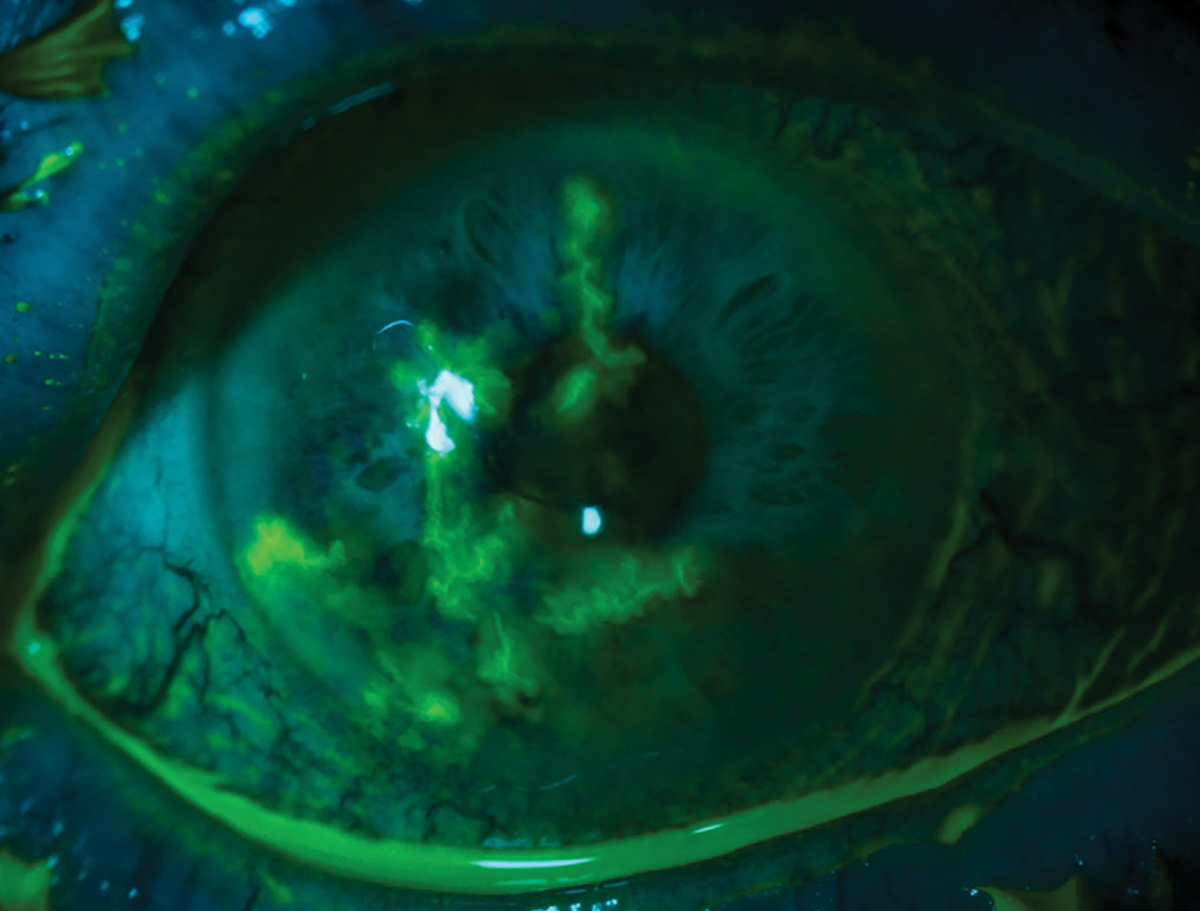Little information exists regarding the frequency of eye pain visits and patterns of care for patients experiencing eye pain in both outpatient and emergency department (ED) settings throughout the US. Researchers at the University of Michigan Medical School in Ann Arbor, MI, recently performed a cross-sectional analysis of population-based survey data over 10 years and found there were 4.6 million outpatient and 1.0 million ED visits annually for this reason. Most outpatient (79%) and ED (70%) eye pain visits did not result in a primary diagnosis for a vision-threatening condition. However, the leading primary diagnosis for eye pain visits to the ED was trauma to the conjunctiva or cornea (22%).1
 |
|
More than five million visits occurred annually in the US for eye pain; the largest percentage took place in the outpatient setting with ophthalmologists, and visits for nonacute causes of eye pain were common. This likely represents an underestimation of eye pain visits as the dataset did not include optometrists. Photo: Alison Bozung, OD. Click image to enlarge. |
This retrospective cross-sectional study, which was published last week in JAMA Ophthalmology, analyzed National Ambulatory Medical Care Survey and National Hospital Ambulatory Medical Care Survey data of a population-based sample of visits to outpatient clinics and EDs that consisted of patients presenting with eye pain. Encounters were characterized by symptoms of burning, aching and irritation associated with numerous ophthalmic (e.g., dry eye disease, uveitis, infection), neurologic (e.g., migraine) and systemic (e.g., fibromyalgia) conditions. Patients were predominantly women (63.2%) and older than 60 (46.6%) in the outpatient setting. Patients presenting to the ED were more often men (51.8%) and younger than 45 (ages <15: 16.4%, 15 to 24: 19.2% and 25 to 44: 35.6%). Ophthalmologists evaluated the largest number of outpatient visits (45.3%). Only visits to physicians within the American Medical Association or American Osteopathic Association were included. Notably, optometrists were not included.
Eye pain was the only primary reason for the visit in 18.3% of outpatient and 32.7% of ED eye pain encounters. The five most common additional reasons for outpatient eye pain visits were abnormal color of eyes (e.g., red eye and bloodshot eyes; 16.2%), diminished vision (11.5%), discharge from eye-tearing and/or eye watering (8.0%), eye itching (6.1%) and eye examination (5.0%). For ED visits, the five most common additional reasons were abnormal color of eyes (14.3%), swelling of eyes (7.9%), headache (7.4%), diminished vision (5.7%) and discharge from eye (5.1%).
Additional follow-up was scheduled in 89.4% of visits. The researchers noted that, when eye pain was the primary reason for the visit and the major problem was deemed to be nonacute, more follow-up visits were recommended compared with acute visits.
They also found that 10% to 15% of outpatient and ED eye pain visits resulted in a diagnosis for a systemic or neurologic condition potentially associated with eye pain, nearly all of which are associated with chronic eye pain. “Further research should delineate the mechanisms underlying chronic eye pain so clinicians can tailor treatments more effectively and identify the modifiable factors that induce a transition from acute to chronic eye pain,” the researchers wrote in their paper.”1
A commentary also published in JAMA Ophthalmology highlighted that the large population-representative sample surveyed therefore permitted assessment of national-level patterns and trends of emergency department and outpatient setting patient visits for ocular pain. It also provided a much-needed initial step toward addressing the current paucity of epidemiologic evidence surrounding the disease and health care burden of ocular pain presentations.2
“These findings would suggest that enhanced health promotion and education of ocular pain conditions for both patients and referring clinicians, as well as increasing availability and access to timely outpatient department ophthalmic or optometric assessment, may need to be considered in an effort to minimize unnecessary strain to emergency services associated with non-vision-threatening presentations,” the commentary authors noted.2
1. Shapiro JN, Abuzaitoun RO, Pan Y, et al. Health care use for eye pain. JAMA Ophthalmol. June 6, 2024. [Epub ahead of print]. 2. Power B, Brodie J, Wang MTM. Disease and health care burden of ocular pain. JAMA Ophthalmol. June 6, 2024. [Epub ahead of print]. |


